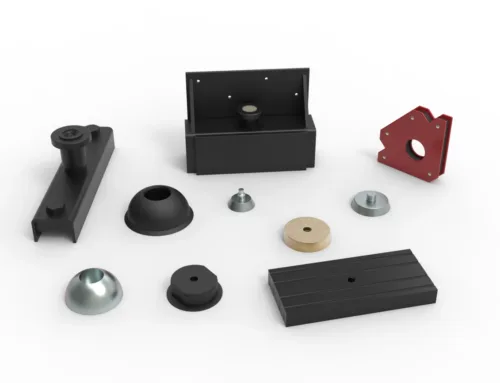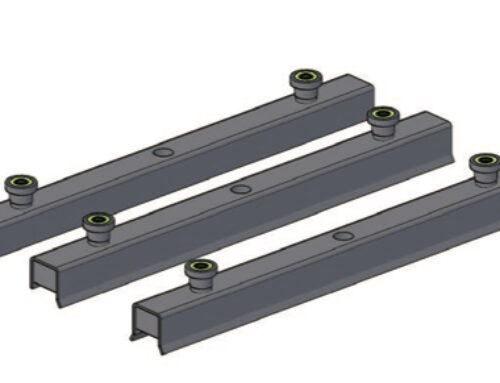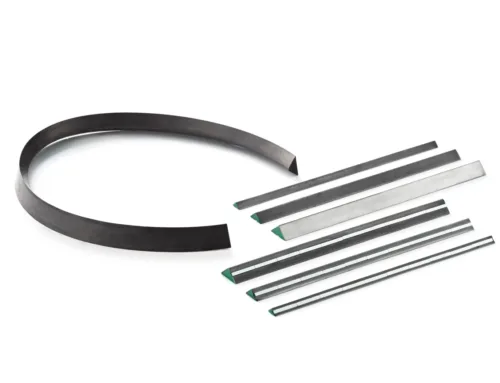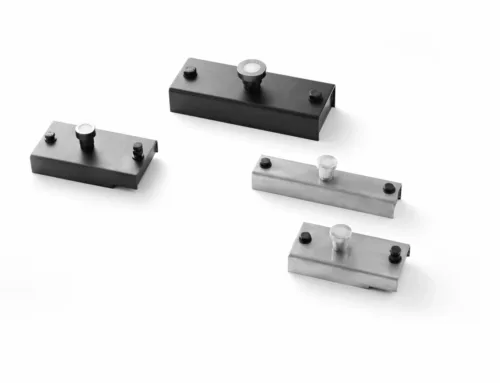Are you wondering which magnets can withstand high temperatures without losing their power? If you’re working with applications where heat is a major factor—whether it’s in automotive sensors, aerospace controls, or industrial machinery—choosing the right high temperature resistant magnets is absolutely critical. Not all magnets perform the same when the temperature rises, and picking the wrong one can lead to magnetic failure and costly downtime.
In this guide, you’ll discover the differences between popular magnets that handle heat well, learn what temperature limits really mean, and get expert tips to find the perfect heat resistant magnetic materials for your toughest environments. Plus, we’ll show you how NBAEM provides reliable, customized solutions to keep your projects running strong under pressure.
Let’s get started!
Which magnets can withstand high temperatures
Understanding magnet temperature limits
I start by separating two key temperatures you’ll see in spec sheets so you can pick the right resistant magnetic materials.
- Curie temperature — this is the fundamental point where a magnet loses its permanent magnetism and becomes paramagnetic. Above the Curie temperature the basic magnetic ordering breaks down. In many cases, crossing the Curie point causes permanent damage because the material’s microstructure andivity can change.
- Maximum operating temperature — this is the safe working limit manufacturers publish. It’s well below the Curie temperature and tells you where the magnet will keep acceptable magnetic strength during normal use. Staying at or below this temperature generally gives reversible magnetic loss: the field weakens while hot but recovers when cooled.
Reversible versus irreversible loss
- Reversible loss: short-term drop in flux or Br at elevated temperature that returns when the magnet cools. Typical when you stay under the maximum operating temperature.
- Irreversible loss: permanent drop in magnetization caused by exceeding the max operating temperature, repeated thermal cycling, overheating near the Curie temperature, or oxidation and structural changes.
Why temperature ratings matter for performance and longevity
- Elevated temperature reduces magnetic strength (Br and energy product), which can affect torque, sensor accuracy, holding force, and motor efficiency.
- Thermal cycling accelerates irreversible degradation even if
Which magnets Can Withstand High Temperatures
Common Types of High Temperature Magnets
Here’s a quick, practical rundown of the magnet I use or recommend when heat is a factor. I keep it short so you can pick the right material for US industrial, automotive, or appliance needs.
- Alnico magnets
- Max operating temp: about 540°C (≈1004°F)
- Strengths: very stable flux at high temps, good for sensors and thermostats.
- Weaknesses: lower magnetic energy than rare earths, brittle, can be demagnetized by shock or vibration.
- Use when you need high temperature resistance without rare cost.
- Samarium Cobalt (SmCo) magnets
- Operating range: roughly 250–350°C (≈482–662°F) depending
Which magnets Withstand High Temperatures
Factors Affecting Magnet Performance at High Temperatures
I keep this simple: three things mostly decide how a magnet behaves in heat — the material itself, physical and chemical damage from heat, and how it’s heated and cooled.
Material composition and domain stability
- Different materials have different heat tolerance. High temp samarium cobalt magnets and Alnico magnets temperature resistance are much better than standard NdFeB.
- Key idea: magnets have tiny aligned regions (magnetic domains). Heat makes those domains wobble. If the material has strong resistance to that wobble (high coercivity), it keeps its strength.
- Watch the NdFeB magnet temperature rating — ordinary NdFeB loses strength faster as temperature rises. High grades help but still trail SmCo and Alnico.
Mechanical stress oxidation and corrosion
- Heat expands parts and can cause mechanical stress or microcracks that reduce magnetic performance.
- Elevated temperatures speed up corrosion and oxidation — especially for NdFeB — which attacks the magnet surface and cuts magnetic.
- Coatings and corrosion-resistant materials matter. For example, SmCo has better corrosion resistance and stability than many NdFeB grades.
Thermal cycling and long term degradation
- One hot event might be okay, but repeated heating and cooling (thermal cycling) often causes cumulative, sometimes irreversible loss.
- Cycling creates stress, microcracks, and gradual realignment or demagnetization of domains. Even if a magnet’s max operating temperature looks safe, frequent cycles can still kill performance.
- Practical tips:
- Allow a safety margin below the max rated temperature.
- Choose heat resistant magnetic materials when your design sees repeated cycles.
- Use protective coatings and design to limit mechanical stress.
These are the main realities behind magnetic performance under heat. If you’re in the US building anything from motors to sensors in ovens or under-hood components, plan for material, protection, and cycling from the start.
Which magnets Can Withstand High Temperatures
Applications Requiring High Temperature Magnets
I see these common US use cases where heat resistant magnetic materials matter. I keep it practical so you know what to pick for each situation.
- Automotive
- Under‑hood sensors, HVAC actuators, and motor components in hybrid and EV drivetrains face sustained heat. Expect 120°C to 200°C in some zones—choose high temp samarium cobalt magnets or Alnico magnets temperature resistance grades over standard NdFeB.
- Exhaust proximity or turbo areas need special thermal and corrosion protection.
- Aerospace and defense
- Flight control sensors, actuators, and instrumentation in hot environments need stable magnetic performance under heat and vibration. SmCo is common for its magnetic performance under heat and corrosion resistance. Thermal cycling and weight constraints matter a lot here.
- Industrial machinery
- Electric motors, generators, and high‑heat processing equipment (furnaces, kilns, heat treat lines) require industrial magnets for heat exposure. I recommend materials with clear temperature limits of magnets and high coercivity to resist demagnetization during thermal spikes.
- Electronics exposed to heat
- Sensors inside ovens, commercial cooking gear, and certain consumer appliances must tolerate repeated heating. For repeated cycles, pick rated for the expected peak and cycling—NdFeB magnet temperature rating is fine for lower heat, but avoid for sustained >150–200°C.
Key quick tips
- For >200°C: consider samarium cobalt or Alnico.
- For cost‑sensitive, moderate heat: ceramic ferrite magnets work up to ~250°C in non‑critical strength applications.
- Watch thermal cycling, oxidation, and mechanical stress — they all reduce life even if a magnet’s static temperature rating looks fine.
Which magnets Withstand High Temperatures NBAEM Solutions
We help US customers pick heat resistant magnetic materials that actually work in the field. Below is a clear look at our product range, custom options, quality checks, and real-world examples so you can match temperature limits to your project.
Product range and available materials
We stock and produce common high temperature resistant magnets:
- Samarium cobalt (High temp samarium cobalt magnets) — stable and corrosion resistant up to about 250–350°C. Best where magnetic performance must stay steady.
- Alnico (Alnico magnets temperature resistance) — handles very high heat (up to ~540°C) but has lower coercivity; good for sensors and simple motors.
- High temperature NdFeB (NdFeB magnet temperature rating) — available in grades rated up to ~200°C for compact high-strength needs; avoid where temps exceed rating.
- Ceramic ferrite (ceramic ferrite magnets) — cost-effective, moderate heat resistance up to ~250°C.
Custom magnet solutions for your environment
We design magnets to match real operating conditions:
- Specify max operating temperature, thermal cycles, and environment (humidity, corrosives).
- Choose material, grade, and coating (nickel, epoxy, special plating) to resist oxidation and corrosion.
- Provide custom shapes, sizes, and assemblies for tight geometries in motors, sensors, or ovens.
- Offer prototypes and sample runs so you can validate performance before full production.
Quality control that targets thermal reliability
We test for long-term magnetic performance under heat:
- Thermal cycling tests and elevated temperature stability checks.
- Flux measurement at temperature and after cooling to detect reversible vs irreversible losses- Mechanical stress testing, dimensional inspection, and coating adhesion checks.
- Environmental tests such as salt spray on request for corrosion-prone parts.
- Documentation support for material compliance (RoHS/REACH) and inspection reports to meet US supply chain needs.
Case studies and practical examples
- Automotive sensor: Replaced standard NdFeB with SmCo for a 180–220°C under-hood sensor. Result: steady output, fewer field failures.
- Industrial oven switch: Used Alnico for a high-heat actuator operating near 350°C — simple, reliable magnetic hold without complex cooling.
- Small high-temp motor Delivered a high-temp NdFeB grade with special coating and thermal cycling verification for a conveyor drive rated to 180°C.
If you need help choosing between Alnico magnets temperature resistance, high temp samarium cobalt magnets, or NdFeB magnet temperature rating options for a US application, we’ll run the numbers, prototype, and test so the magnet you pick lasts where it needs to.
Which magnets Withstand High Temperatures

Tips for Choosing the Right Magnet for High Temperature Applications
I keep this short and practical so you can make the right choice fast.
- Start with the real max temperature
- Know continuous operating temp, short spikes, and safety margin (typically +20–50°C).
- Remember Curie temperature: pick a magnet whose Curie point and operating retention are well above your max.
- Think thermal cycling not just peak temp
- Repeated heating/cooling causes more long‑term loss than a single spike.
- Choose materials known for thermal cycling stability (for example high temp samarium cobalt magnets over NdFeB for many cycles).
- Check magnetic strength retention across your range
- Ask for BH curves or temperature coefficient data from the supplier.
- Compare expected percent flux loss at your max temp — different grades behave very differently.
- Match material to environment and load
- Corrosion or oxidation? Pick corrosion resistant materials or use suitable coatings.
- Mechanical stress or vibration? Consider more robust materials and secure mounting.
- Typical tradeoffs: Alnico magnets temperature resistance is high but lower coercivity; NdFeB magnet temperature rating varies by grade and may need protection; ceramic ferrite and SmCo offer good heat resistance and stability.
- Plan coatings and housings carefully
- Many protective coatings fail at high heat. Consider stainless housings or high‑temp seals instead of standard plating.
- For food ovens, motors, or shipboard gear in the US market, ask about NSF or aerospace‑grade finishes where needed.
- Work with a supplier who tests and prototypes
- I recommend using a partner like NBAEM for:
- material selection (SmCo, Alnico, high temp NdFeB, ferrite)
- custom grades and geometries
- thermal cycling and high temp performance testing
- small batch prototyping and production QA
- I recommend using a partner like NBAEM for:
- Quick checklist before you buy
- Max operating temp and spikes
- Number of thermal cycles expected
- Required flux retention percent at temp
- Corrosive or oxidizing environment
- Mechanical loads and mounting method
- Coating or housing needs for high heat
- Ask the supplier for test data and samples
Future Trends in High Temperature Magnets
I’m watching a few clear trends that matter for US customers who need heat resistant magnetic materials in real-world gear.
- Advanced rare earth magnet tech
- Grain boundary diffusion and coercivity NdFeB raise the NdFeB magnet temperature rating without huge strength loss. That means some NdFeB grades can be used closer to 200°C with better retention
- SmCo improvements focus on even better thermal stability for 250–350°C environments.
- New materials and composites
- Research into refractory magnetic alloys and bonded composites aims to push operating temps above current limits while keeping corrosion resistance.
- Better and sealing
- Improved coatings (ceramic, nickel, hermetic seals) reduce oxidation and thermal degradation, which is huge for long-term reliability in ovens, engine bays, and industrial heat processes.
Manufacturing advances
- Additive manufacturing and hot pressing let us make complex shapes and optimized microstructures that hold up under thermal cycling. That helps motors and sensors in aerospace and EVs.
- Closer-to-source rare earth processing in the US is also improving stability for high temp samarium cobalt magnets and specialty NdFeB grades.
- Testing and lifecycle focus
- Expect more rigorous accelerated thermal cycling tests and standardized ratings so engineers know how magnets will perform over years, not just at one temperature.
If you’re designing for heat, these trends mean more options: higher temp performance, better coatings, and smarter manufacturing to match US industry needs.





[…] (see how magnets are used in wireless charging). With advancements in high-temperature magnets (learn more about magnets that can withstand heat), new tech is becoming more efficient and […]
[…] Temperature: N42 can handle slightly higher temps before losing strength. For higher-heat environments, special grades are needed (see high‑temperature magnet guide). […]